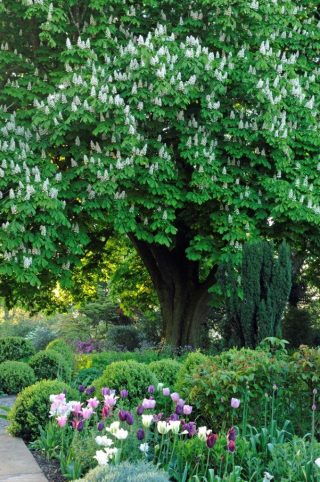Nature’s Clever Ways
One of the spring highlights at Morton Hall is when our ancient, listed Horse Chestnut on the East Terrace bursts out in flower. This tends to coincide with the tulip bloom, creating a stunning contrast to the colourful spectacle in the South Garden borders below.

You might have observed that chestnut flowers change colour over time with originally pale-yellow centres turning red. This phenomenon is called floral colour change and was first described by Fritz Müller, a colleague of Charles Darwin, in 1877.

Floral colour change is caused by an increase or decrease in concentration of certain pigments and can affect the entire flower or like in the case of horse chestnuts, only parts of it.
There are two main causes of floral colour change: It can be a sign of ageing or an indicator of pollinator activity where the deposition of pollen on the stigma induces the colour change. In the case of horse chestnuts, the colour change increases pollination efficiency as pollinating insects do not recognize the darker flowers and are therefore directed to flowers which have not been pollinated yet.
How clever is that?
